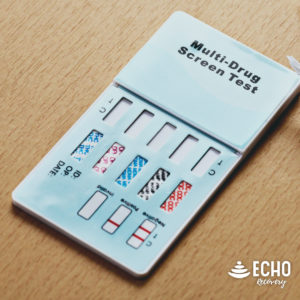By now, most of America is well aware of the ongoing opioid epidemic, or has at least heard about it on the news a time or two. However, while most of the country recognizes the names of the most common opioids – names like heroin and OxyContin – and may even have a little knowledge regarding their effects, the true danger of fentanyl remains a mystery to many. What is Fentanyl? Why is it so dangerous? Where does it come from?
What Is Fentanyl?
Fentanyl is an opioid, which means that it is a compound that resembles opium in the way it physically or psychologically affects the user. Originally developed in 1959, fentanyl is a synthetic opioid meant to provide anesthetic and pain relieving effects to those who had recently had major surgery. Like other opioids, such as morphine and codeine, fentanyl was first produced for medical purposes.
Fentanyl is over 100 times stronger than morphine, which made it extremely effective at addressing pain during and after surgery. In the 60’s, fentanyl was administered as an intravenous dose to provide anesthetics before surgery. Due to the drug’s usage primarily in the hospital setting, there were no cases of fentanyl abuse at that time.
However, in the 1990s, manufacturers developed a fentanyl patch that could be applied to the skin for long-term pain relief, as well as a lollipop that could be consumed to provide pain-relieving benefits. Cancer patients enjoyed the pain relieving benefits of fentanyl, as well as the reduction in the emotional responses to pain. Unfortunately, recreational users did, as well.
Why Is Fentanyl So Dangerous?
 As mentioned, fentanyl is extremely potent – 100 times stronger than morphine and 50 times stronger than heroin. In fact, even two milligrams is strong enough to cause death in adults. So, why do users risk death with such a strong substance? Sometimes, those using fentanyl are unaware.
As mentioned, fentanyl is extremely potent – 100 times stronger than morphine and 50 times stronger than heroin. In fact, even two milligrams is strong enough to cause death in adults. So, why do users risk death with such a strong substance? Sometimes, those using fentanyl are unaware.
In the early 2000’s, drug cartels began cutting fentanyl with a number of other illicit drugs, including cocaine, methamphetamines, and especially heroin. Sometimes, the cut drugs are diluted and sold in bricks; other times, the product is pressed into pills and sold as Xanax, OxyContin, or other prescription medications. Either way, a poorly mixed batch can feature areas rich in fentanyl, which is much stronger than the drugs it imitates. An unsuspecting user can consume high amounts of fentanyl without even knowing they’re using the drug.
What’s the motivation behind cutting fentanyl into other drugs? First, fentanyl’s ready availability from foreign laboratories makes it hard for dealers to pass up the ease of mass production. Compared to heroin, which takes months of growing and cultivating – not to mention land – accessing synthetic fentanyl is simply easier. In addition, the high potency of fentanyl means manufacturers must only include a little in each pill on order to give the user the effects of using another prescription opioid.
Diluting and cutting fentanyl can result in a great deal of money to be made. In fact, street values of a kilogram of diluted fentanyl can reach upwards of $350,000, all for a product that cost only $3,000 in its purest form. In pill form, that same kilogram can result in a million pills worth as much as $20 apiece – up to $20 million in profits for the seller.
Where Does Fentanyl Come From?
One source of fentanyl in the US is legal prescription medications. Some users improperly obtain and consume fentanyl lollipops for recreational purposes. Others remove fentanyl gel from the fentanyl patches and concentrate and inject or smoke it. Still, legal prescriptions are only one source of fentanyl.
Primarily, fentanyl in the United States comes from China, through multiple channels. One way Chinese manufacturers send fentanyl to the US is via direct mail. Consumers purchase fentanyl and other drugs over the dark web; the drugs are then packaged and arrive directly at the consumer’s mailbox, ready for consumption. Since fentanyl is so potent, the product arrives in tiny envelopes, packed in small packages that are easy to overlook with the large volume of international mail that passes through the US Postal System every day.
In many cases, fentanyl via mail is intentionally mislabeled so that it passes through other countries that proved less conspicuous than China. Often, packages travel through countries like Tonga and Canada before finding their way to the United States. Hundreds of shipments are seized each year, but hundreds more arrive at their destinations. When you consider just how potent a small envelope of fentanyl is, hundreds of shipments takes on a scary, new meaning.
However, in other cases the fentanyl pipeline is much more complicated than a direct route from China to US shores. First, much of the bulk fentanyl produced in China gets funneled through Mexico, where it is accessed and distributed by the same drug cartels that push other drugs across the US border. It is diluted, cut with other drugs, and distributed – usually through San Diego – to dealers across the county.
How does the fentanyl cross the border? The bulk of the US fentanyl trade comes from the Sinaloa and Cártel Jalisco Nueva Generación cartels. Like many other drugs, fentanyl reaches the US via the cartel’s smuggling routes on foot, via car, semi-truck, or boat. To that end, seizures of fentanyl have occurred in produce trucks, shoes, buses, and in airport passenger terminals.
What Can We Do About It?
Investigators in the United States and Mexico are working together to try and halt shipments of fentanyl from coming into the United States, which includes efforts to cease manufacturing, cutting, and transport operations in Mexico. Border security, mail inspections, and other efforts continue on both sides of the US borders with Canada and Mexico. China, as well, has begun efforts to curb fentanyl production with a series of regulations on the chemicals involved.
Still, officials are fighting a tough battle. Fentanyl has maintained its position as the most commonly overdosed drug in the United States since 2016, when it first surpassed other opioids in that respect. Similarly, between 2014 and 2015, officials saw a 2,400% increase in the seizure of fentanyl at the border. Cooperation among all countries and agencies is necessary to limit the amount of this truly dangerous drug that crosses our borders.

Experienced Chief Executive Addiction Recovery and Mental Health Professional
Business professional in the Addiction Recovery and Mental Health industry for the past 26 years. Caring, compassionate and strongly motivated to make a difference in the organizations I am affiliated with and welfare of the population we serve. Currently focused on advocating, educating and developing projects leveraging evidence based, real time technology to support individuals in recovery.


 Amidst the growing opioid crisis, Annapolis may soon offer test strips for fentanyl detection. A test kit could be as inexpensive as $1 per unit. The test itself is as easy as sprinkling a little bit of the drug into a cup of water and then putting the strip in the water. One line on the strip means there is fentanyl, two lines means there is none.
Amidst the growing opioid crisis, Annapolis may soon offer test strips for fentanyl detection. A test kit could be as inexpensive as $1 per unit. The test itself is as easy as sprinkling a little bit of the drug into a cup of water and then putting the strip in the water. One line on the strip means there is fentanyl, two lines means there is none.
